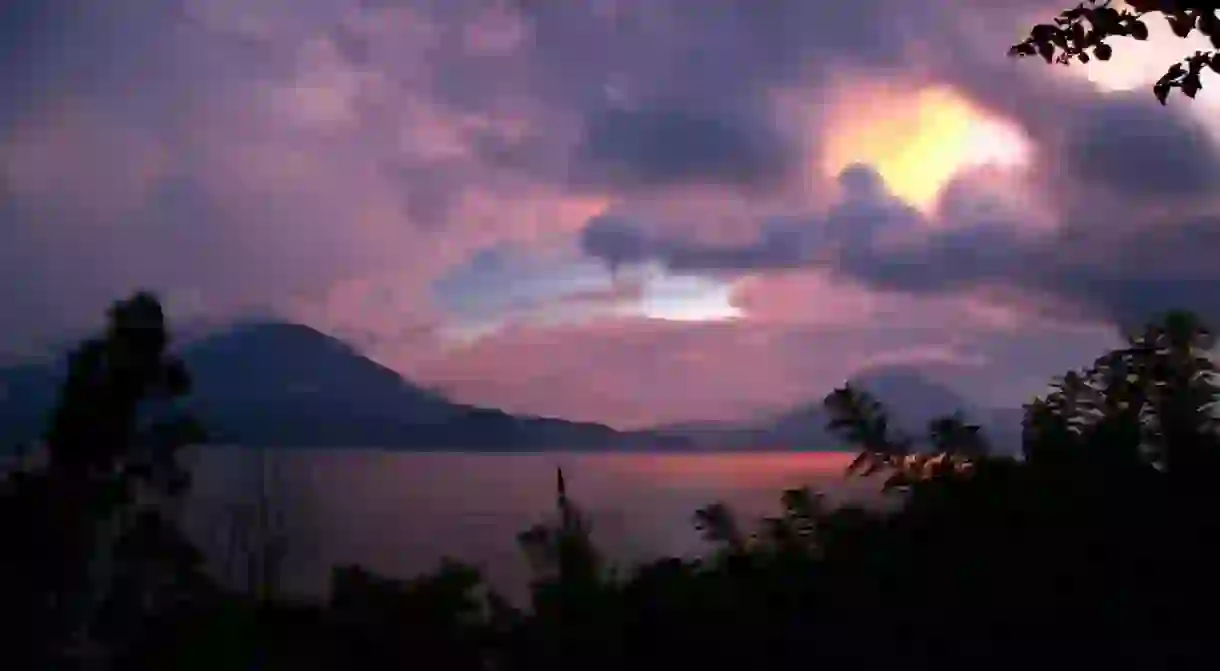The 7 Most Epic Hikes to Take in Guatemala

Guatemala is one of the most beautiful countries in the world, and the best way to discover this Central American paradise is by hiking. With a wild landscape that includes smoke-spewing volcanoes and mist-shrouded lakes, hiking through Guatemala gives you the opportunity to see a side to this country you’d otherwise miss. With that in mind, here are the seven most epic hikes to take in Guatemala.
Pacaya Volcano
Not far from Antigua is Pacaya, an active volcano that’s become the most popular trekking destination in the country. Standing 2,500 meters at its peak, the Pacaya hike starts from 1,680 metres at the town of San Vicente Pacaya, and takes about three and a half hours. The road is well marked, but because you’re hiking an active volcano it’s still better to have a guide. There are hundreds of tour groups in Antigua – most bring marshmallows on the trek so you can toast them over the still-hot lava flows.

Ipala Volcano & Lagoon
Ipala is a great walk for hiking rookies: standing at a diminutive 1,650 meters, it only takes about two hours to reach the top. But when you get to the summit, you’re in for a treat: inside the crater is a beautiful lagoon, the perfect spot to cool down in and have a splash around. Bring a picnic and your swimsuit and make a day of it. You don’t need a guide for this one, as the path is well-marked and the hike is short.
Acatenango Volcano
Acatenango is the third-highest volcano in Guatemala, and this trek is considerably more difficult than Pacaya. It takes around five hours to get to the crater, and another three to walk back down, so start early. The summit is the best lookout point to the active Fuego Volcano, and on a clear day you can enjoy views of Pacaya and Agua Volcanoes too. The hike can be dangerous when the weather is poor and visibility is reduced, so you definitely need a guide for this one. Bring warm, waterproof clothes, as the weather here is unpredictable. The views are best from November to January.

Los Amates Waterfall
Formed by a river that cascades down from a 35-meter-tall rock wall, Los Amates waterfall is spectacularly beautiful. It takes about three hours to cross the small rivers, and you’ll need a guide – many tour companies include waterfall rappelling, if you’re so inclined. Bring your swimsuit because you can swim in these crystal clear pools, and start the hike in the morning so you can spend the day here relaxing. Bring food and plenty of water, as the weather here can get sweltering.
San Pedro La Laguna, Lake Atitlan
With the achingly beautiful Lake Atitlán as its setting, San Pedro Volcano is easily one of the best hikes to do in Guatemala. It’s the easiest of the lake’s three volcanoes to climb, and the hike takes about three to four hours. The tourism laws dictate that you need to hire a guide, but this only costs Q100 and the guides are knowledgeable and the groups small.

Los Vahos
For a short but very enjoyable hike, there’s Los Vahos. Just a quick hike south of Quetzaltenango, these natural saunas mean you can enjoy a eucalyptus-scented steam after your walk – although as you’ll only be going about 1.5 miles, you certainly won’t need a muscle soak! The best way to get to Los Vahos is to head out to Quetzaltenango on the Almolonga Highway and then simply follow the signs for Cerro Quemado Volcano. You’ll be able to enjoy good views of the city as you walk.
Tajumulco Volcano
At 4,220 metres Tajumulco Volcano is the highest mountain in Central America, so you can’t be a serious trekker and not come here. The hike takes you past forests, prairies and rocky terrains, and despite Tajumulco’s height, it only takes about four hours to reach the top. From the summit, when the weather is fine, you can see Mexico on one side and El Salvador on the other. When the sky is especially clear, you can sometimes even see the Pacific coast in the distance. The trails aren’t well marked, so go with a guide.













